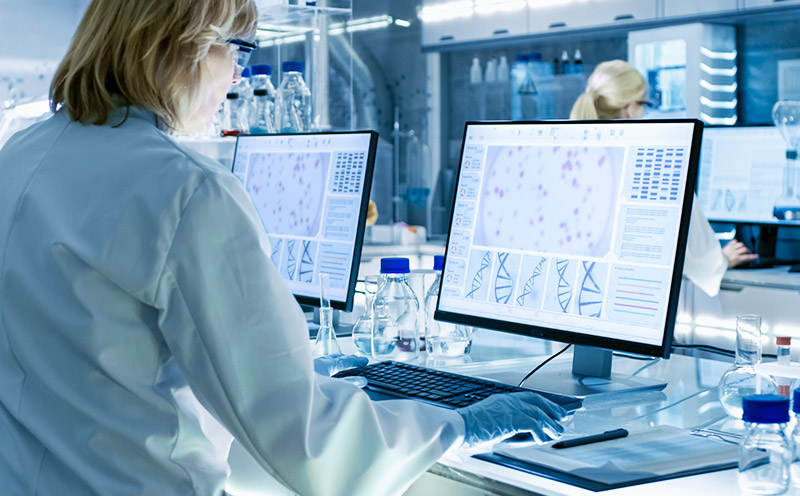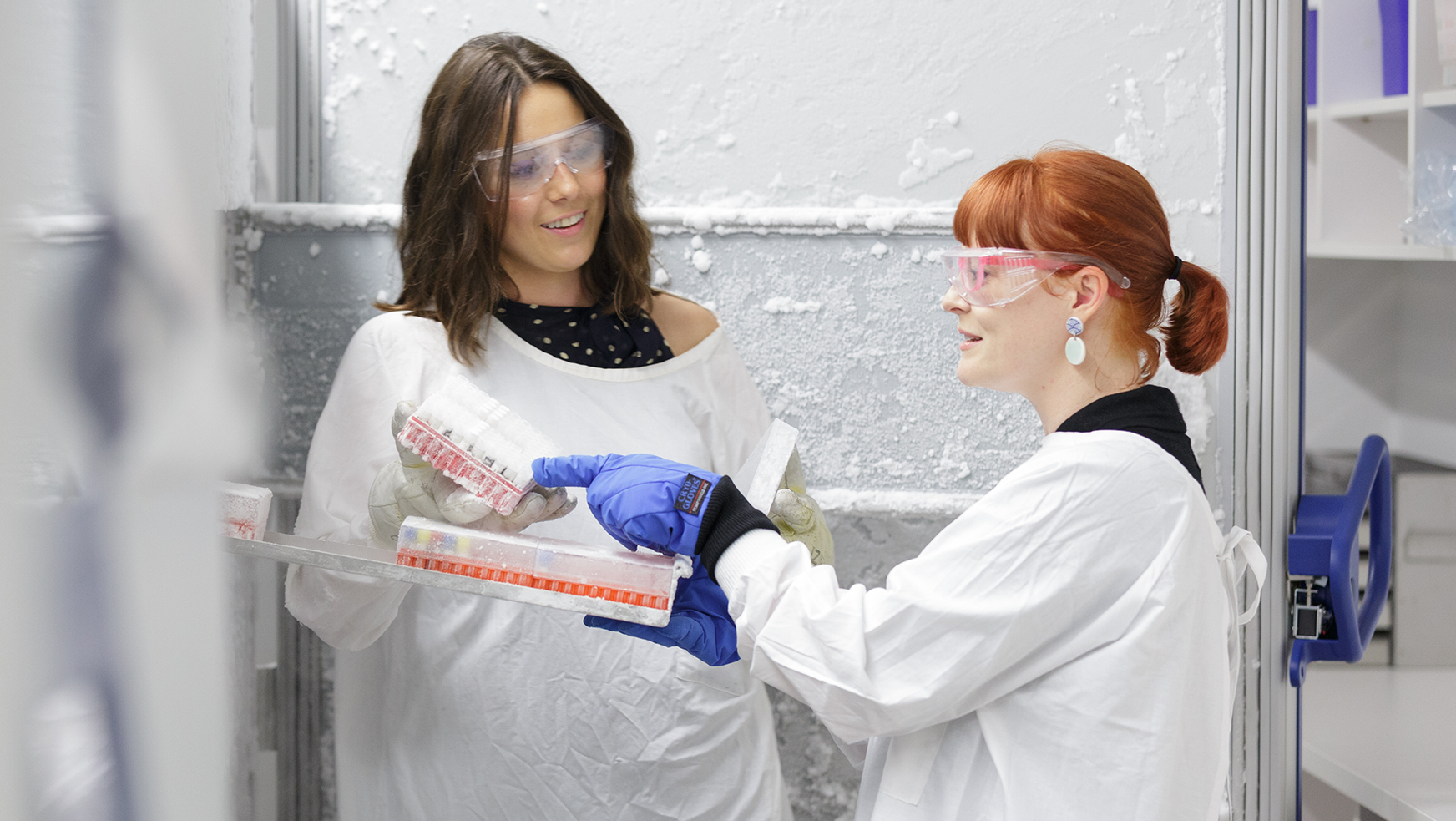Melanoma Institute Australia’s research strength is founded on resources that facilitate an array of research projects.
Our Melanoma Research Database is the largest in the world, with just under 45,000 patient records dating back to 1957 when MIA was known as the Sydney Melanoma Unit.
Since that time, the Institute has expanded its research assets to include a Biospecimen Bank, as well as data gathered from extensive Clinical Trials.
These assets are made available to researchers around the world to gain a better understanding of the causes, development, diagnosis and treatment of melanoma.
MIA has also built strong collaborations with other leading clinical and research partners in Australia and around the world.
Melanoma Research Database (MRD2)

In 1968 Professor Gerry Milton of the Sydney Melanoma Unit (SMU) was trying to better understand the disease. He recruited Dr Helen Shaw to collect all the records of melanoma patients treated at Sydney Hospital since 1957 and put them together in an organised way. The benefits were clear immediately and the SMU committed to maintaining Dr Shaw’s system and continue keeping their patients record.
Always forward thinking, the Unit (now known as MIA) soon decided to embrace the “high technology” of the day and converted the entire catalogue over to punchcards and a database was born. Over the years the database has gone through big technologic leaps while always maintaining the collection of new patient records.
The Melanoma Research Database recently made another big leap forward. It was updated to accommodate the cataloging of data related to new targeted therapy discoveries and brought about new efficiency to the collection of investigation of data.
Now known as the MRD2, it has become the biggest database of its kind the world, with over 50,000 records and several staff members, including IT specialists and clinical data managers, dedicated to its refinement, preservation and cultivation.
The MRD2 is a resource used to identify and extract specific sub-sets of information for research projects related to diagnosis, prognosis and treatment outcomes in melanoma patients. It enables us to cross-examine information and extract more complex data than ever before. The knowledge gained from these studies assists in the management of melanoma patients around the world.
All patient information at MIA is treated confidentially. Data is entered into the MRD2 after a patient has provided consent, and only de-identified information is used in our research. We are grateful to all of our patients who have contributed to this invaluable resource.
Biospecimen Bank

Melanoma Institute Australia (MIA) began its own biospecimen bank in 1998. The MIA Biospecimen Bank underpins hundreds of approved research projects at MIA and through collaborations which aim to improve our understanding of tumour biology for better prevention, diagnosis and management.
In addition to collecting samples, the MIA Biospecimen Bank also records information from any pathology reports associated with the samples and accesses information in our Melanoma Research Database about the health and treatment of the patients who donate their specimens.
The MIA Biospecimen Bank takes our research capacity to another level. It is the largest collection of melanoma tissue samples in the world, donated by over 10,000 patients so far and growing daily. These samples add enormous value to the clinical story of our patients and drive our discovery and translational research.
Personalised diagnosis and treatment of melanoma would mean that we know what to test for and what treatment to give in each case, and it is the research conducted on these tissue and blood samples that gives us these insights. The fact that our collections extend back into the past, so that outcomes are known, makes them all the more valuable.
For example, the Biospecimen Bank inspired the Institute to launch the Australian Melanoma Genome Project, which is mapping the entire genome of 500 melanomas. This internationally ground-breaking project could simply not have taken place without the MRD and the Biospecimen Bank.
Patients have the choice to contribute their tissues and researchers do not receive identifying information.
The MIA Biospecimen Bank is supported by grants from the National Health and Medical Research Council of Australia (NHMRC) grant and Office for Health and Medical Research NSW Health. It also receives support from Macquarie University and donations to MIA.
Clinical and Research Partners
Melanoma Institute Australia works in close collaboration with other leading clinical and research bodies.
These include The University of Sydney; Macquarie University; St Vincent’s and Mater Health Sydney; The Royal Prince Alfred Hospital; Westmead Hospital; QIMR Berghofer; Sydney, Northern Sydney and Western Sydney Local Health Districts; and Federal and NSW Government bodies.
MIA Research Policy and Research Integrity
At Melanoma Institute Australia, we are committed to the highest standards of research.
We expect researchers to manage and conduct their research with utmost professionalism and with respect and regard for humans, animals and the environment, irrespective of their funding situation, research area, experience or working arrangement.
Our research policy is aligned with the Australian Code for the Responsible Conduct of Research, the University of Sydney’s Research Code of Conduct and the Macquarie University Code for the Responsible Conduct of Research.
These Codes establish a framework of responsible research practice and conduct and apply to all researchers who are defined as ‘staff members and students carrying out research under the imprimatur of the University’. MIA is bound by its affiliation agreements to operate under these codes.
The Chair of the Research Committee, the Head of Research Management and the Chief Executive Officer are available to answer any queries about responsible research, discuss any concerns relating to research integrity, and explain your options and the process for submitting a formal complaint. You can contact them via research@melanoma.org.au
